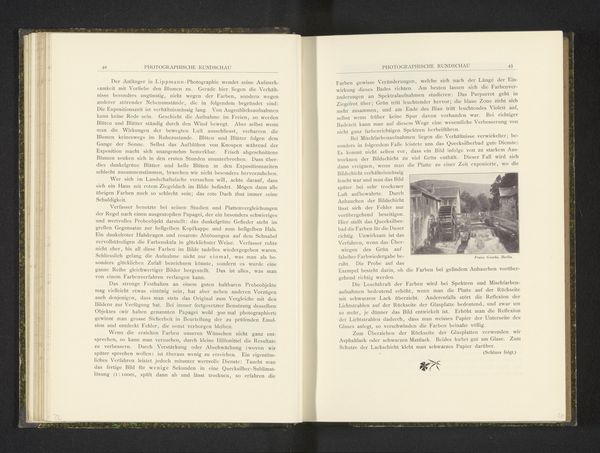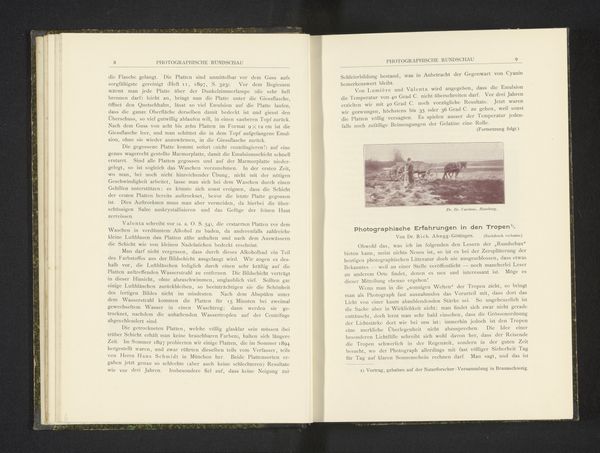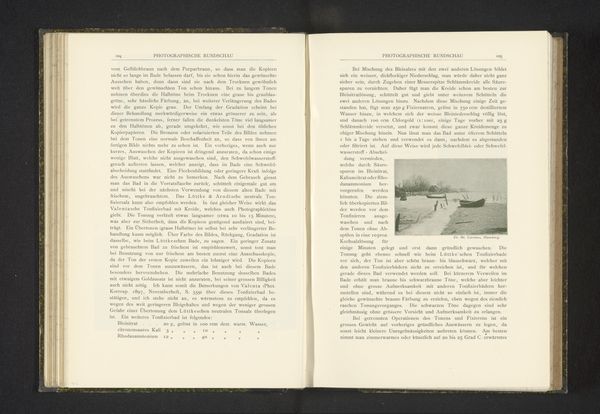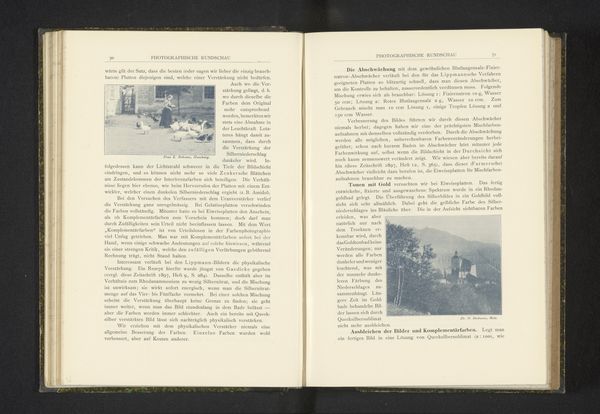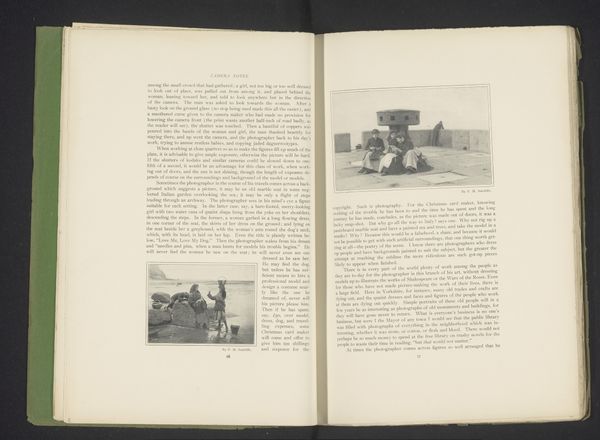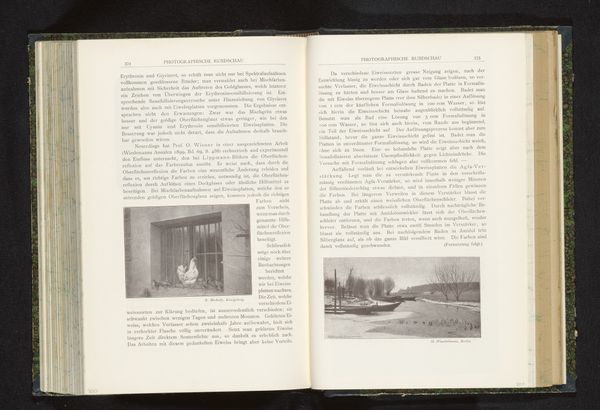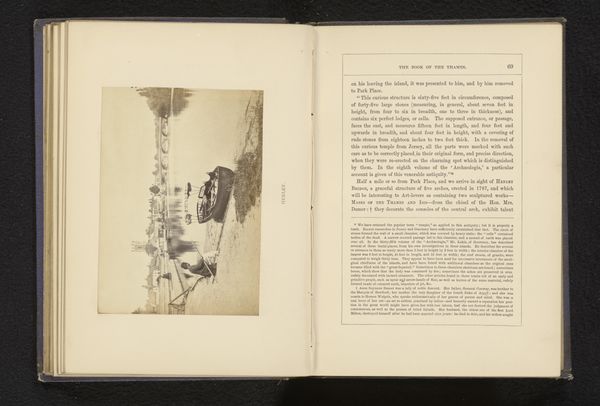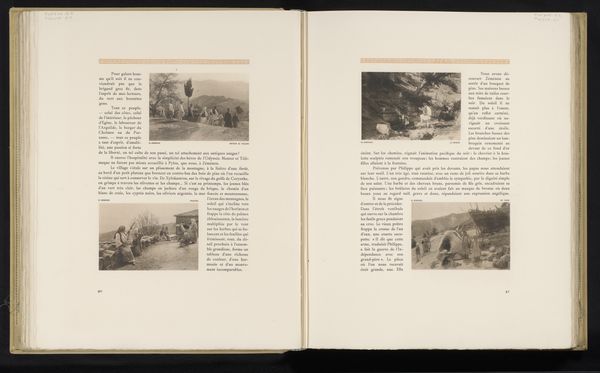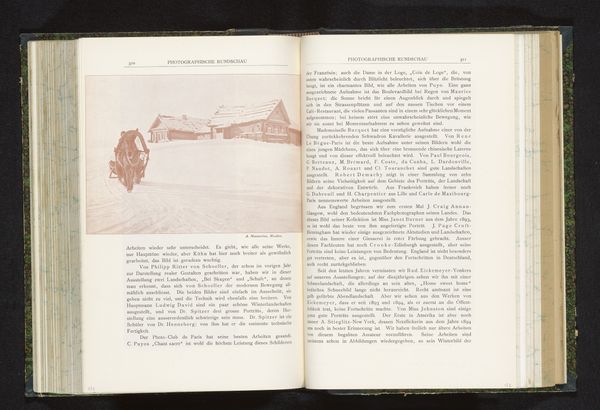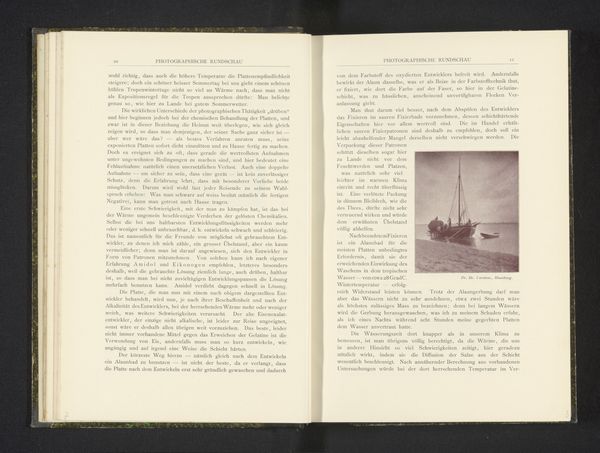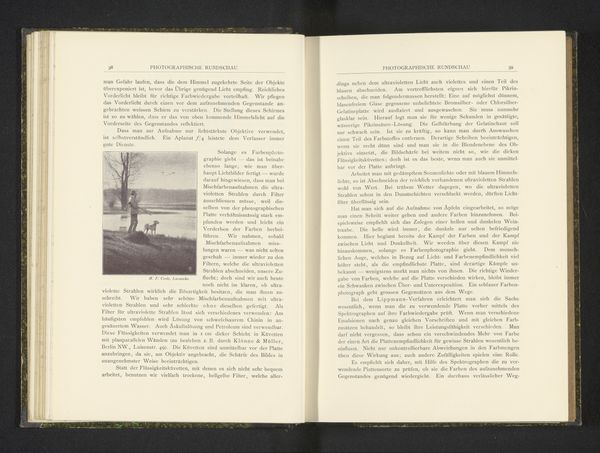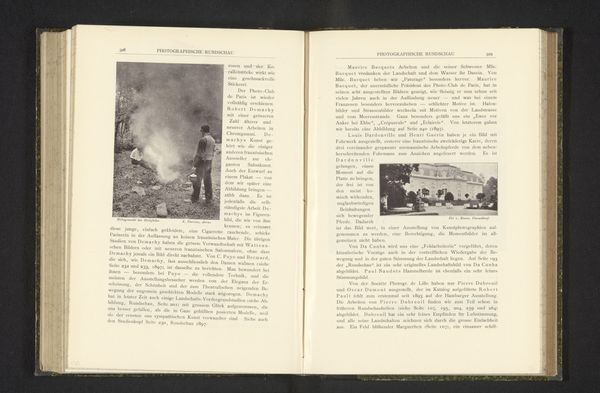
Dimensions: height 88 mm, width 145 mm
Copyright: Rijks Museum: Open Domain
Curator: I find this image strangely serene. The way the road curves alongside the water…there’s almost a dreamlike quality. Editor: Indeed. This page, held within the collection of the Rijksmuseum, displays a print titled "Gezicht op een weg met koeien langs het water"—"View of a Road with Cows Along the Water." We believe it dates to before 1900 and it’s the work of Alfred Stieglitz. Curator: Stieglitz…ah, that explains it. The symbolism of roads and waterways – pathways to journeys, to the unknown, the flow of life…It speaks to our deepest migratory instincts. And cows… bovine imagery often evokes fertility, patience, groundedness. Editor: Very much so. Stieglitz, a key figure in the Photo-Secession movement, sought to elevate photography to fine art. Think about the institutions then—academies clinging to painting and sculpture, resisting photography’s acceptance. Stieglitz battled that by embracing Pictorialism. Curator: Yes, look closely. The soft focus, the almost painterly rendering. Pictorialism used techniques such as special lenses and printing processes to create an impressionistic feel. It almost transcends the camera's mechanical nature. It is supposed to convey emotion, mood… subjectivity! Editor: And Stieglitz understood the politics of the image so well. Pictorialism offered a rebuttal to the documentary function that was typically associated with photography. By intentionally manipulating the image, Stieglitz and others declared photography as art—an aesthetic experience, not mere reportage. Curator: Right. So the image is not just a simple rural scene; it is a deliberate statement. Think of how it was exhibited, reviewed, and discussed… it pushed boundaries! This subverts documentary for suggestion. The blur invokes an awakening of primal instinct, emotion. Editor: Consider also the wider context. Late 19th century Europe was experiencing rapid industrialization, urbanization, migration. An image of rural calm like this speaks to a yearning for simpler times. Nostalgia as a political statement almost! Curator: Definitely a deliberate artistic and societal intervention. To go back to the road and waterway and how people navigated the world and their own place in society. Stieglitz created something eternal from a fleeting moment. Editor: A successful blend of art and social critique, indeed. Now, viewing it from our contemporary perspective allows for continuous and multiple meanings, it evolves over time.
Comments
No comments
Be the first to comment and join the conversation on the ultimate creative platform.
